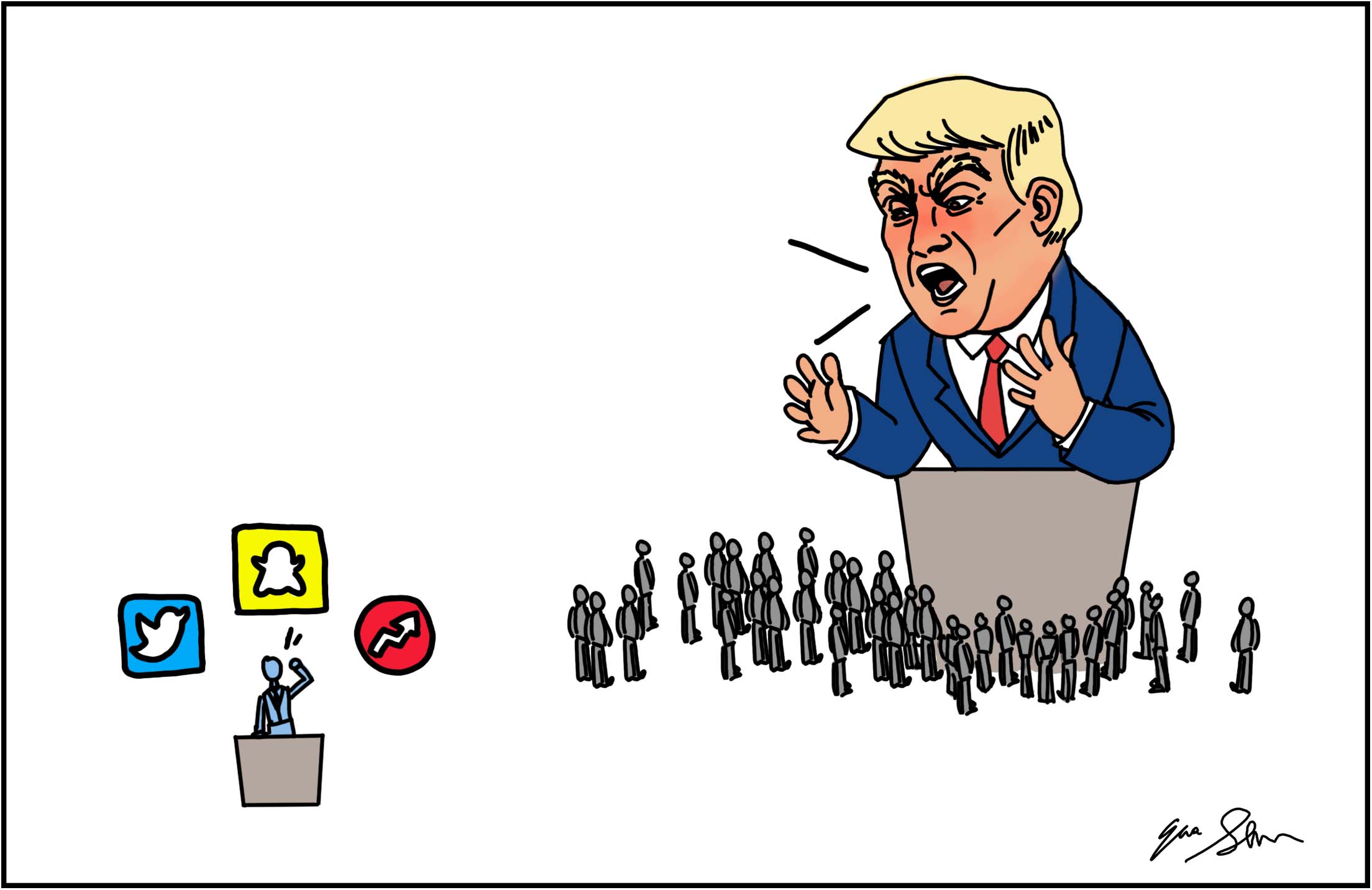Considering that I was in high school the last time there was a presidential election in the United States, I was pretty excited for this one. Now, I’m longing for it to end. Every news cycle churns out the latest Donald Trump faux pas, and every debate features mudslinging rather than discussion while the moderators encourage it. More than that, I wish broadcast journalists would consider covering the records of our candidates instead of what nasty thing they’ve said to opponents or where they’re having a stump lunch. Many in the media have come forward as having failed to stop Trump because of how lucrative it is to cover him. Nicholas Kristof of The New York Times quoted many broadcast journalists who share the guilt in following Trump’s campaign. Yet they continue to hand him the microphone. Sam Feist, CNN Washington bureau chief, claims that Trump gets so much airtime because, unlike the other candidates, he is open to it.
On a more optimistic note, journalism is finally settling into the digital space. For the past few years, newspapers’ print advertising revenue has free-fallen and the entire industry of journalism fell into chaos. No one was quite sure where that would lead or whether it would hurt the quality of information. Though many worried about Twitter’s impact, I think we’re seeing an evolution on the part of journalists that is innovative rather than detrimental. Because there are so many digital media sites, competition is becoming more about supplying independent, high-impact content.
Moreover, journalism is getting closer to young readership. Outlets have infiltrated all social media sites, and now the news creeps into the average newsfeed. Kids can get news from Snapchat, a communication system that has become so effective as a news tool that analytics companies — such as SnapAlytics — have emerged to process the data. Though BuzzFeed began as a fun site for GIFs and listicles, it soon transitioned into a political space. It hired from The New York Times and The Guardian to build its news team. BuzzFeed’s reliance on sponsored articles calls ethics into question, but it has emerged as a functional and respectable news outlet.
Even traditional media sources have had to adapt. The Atlantic’s weekly newsletter features “Photos of the Week,” which delivers news in the captions of professional photography. The New York Times founded The Upshot, a data-driven section on its website, in 2014. A year later, it posted about the experience in its newsletter, citing digital journalism’s pull away from the traditional article: “The tools of digital journalism mean that blocks of text are not always the clearest, best way to deliver information. I know that some word lovers will argue that the alternatives to text ‘dumb down’ journalism, but I disagree. When done right, photo essays, maps, charts, videos and interactive calculators can be smarter than paragraphs.” While we cannot solely rely on appealing graphics to deliver our news, they have made for an unlikely ally to effectively communicate important information. It is much more palatable and accessible to visualize finicky data such as voting results or numbers-heavy research results rather than try to communicate it via text.
Emily Shwake is a senior English major. She can be reached at eshwakedbk@gmail.com.



